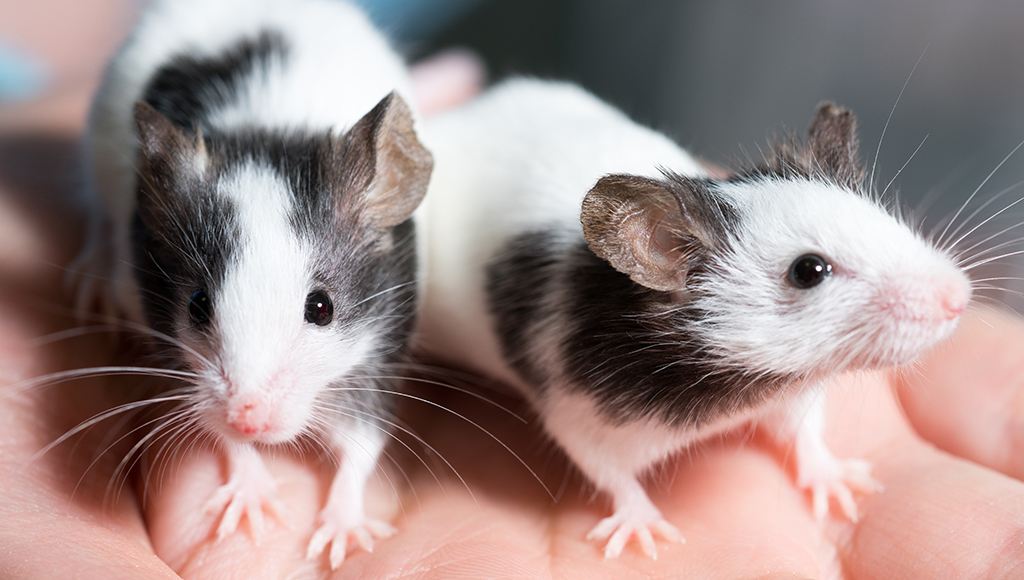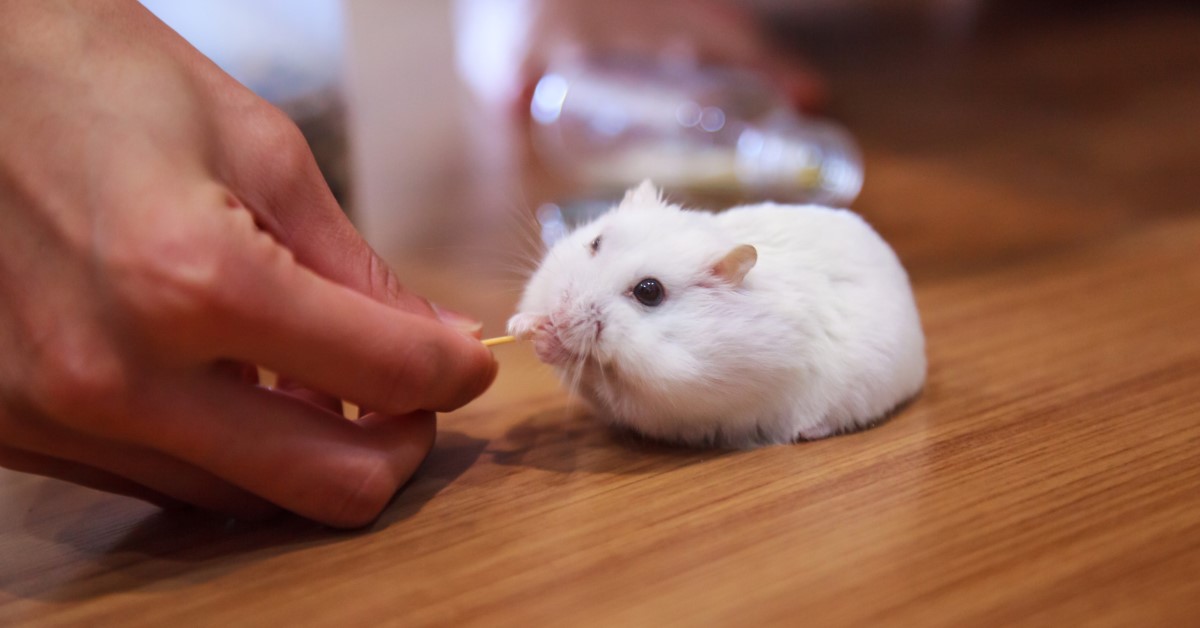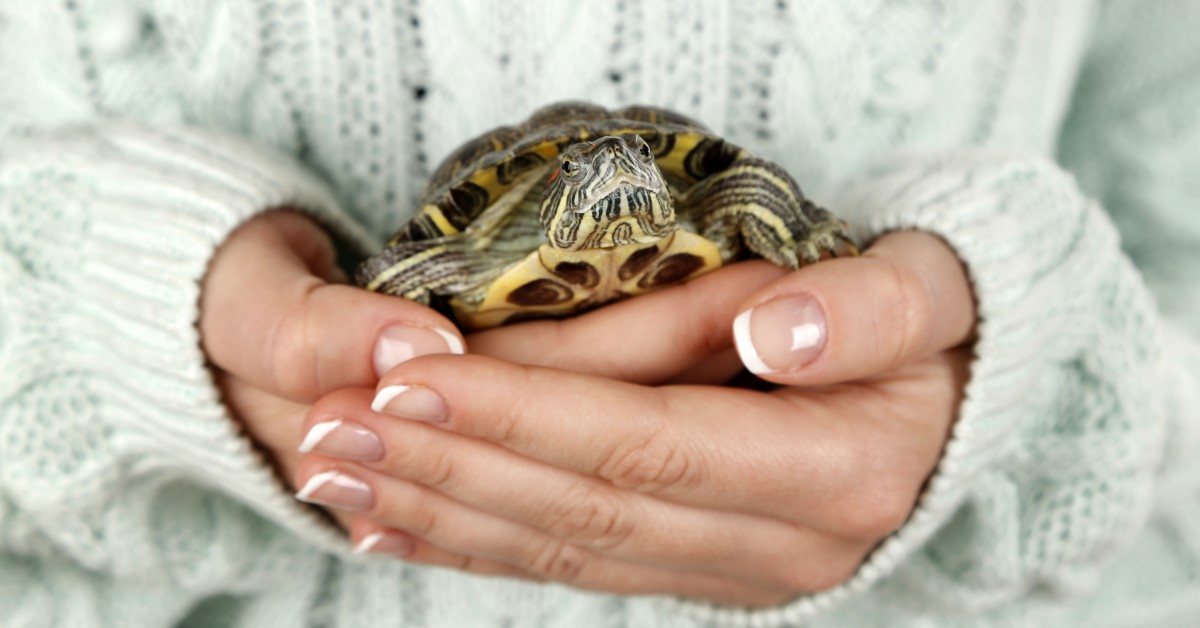Pocket Pals: There's a Mouse in the House!
Domestic mice are gentle creatures which make delightful pets.

Rats and mice in the wild can be one of the worst pests for mankind, despite their indispensable part within the ecosystem. However, domestic mice not only contribute a great deal to the advancement of research for the benefit of man, but make delightful pets too. Domestic mice are not the same as their wild counterparts; having been domesticated for over 100 years. Domestic mice are often associated with the bad reputations of wild mice, unfortunately leaving these gentle, playful creatures misunderstood.
Easy to keep, with minimal space and care requirements, these intelligent pets provide all the pleasure and satisfaction of a warm, cuddly, and friendly pet companion. They are also very inexpensive to obtain along with the required supplies and accessories needed to make them happy and keep them healthy. For these reasons, mice are an excellent pet for children.
Domesticated mice are highly intelligent (which is one of the main reasons they are used in research), clean, and very sociable. They interact with their owners the same as dogs and cats do and can be easily trained. Although rodents are nocturnal (sleeping during the day and active at night), mice will quickly learn to adjust their schedule and be ready to come out and play when you get home from school or work. Pet mice require no vaccinations and carry no diseases harmful to humans. Another good thing about mice as pets, is that they do not make any noise or need to be walked every day like a dog, although they do love to go with you when you go out and about. Watching mice play can be a lot of fun too. They are great stress reducers and are equivalent to having a tank of fish.
Once a person understands that mice rarely bite, and that when they do it is out of fear and not anger, they will learn how easy it is to handle and care for their “pocket pet” and as a wonderful relationship develops. Occasionally a mother protecting her babies may nip at fingers poked in through the wire, or fingers that smell like food, but this is rare, as these creatures are extremely docile. Remembering these things and taking precautions such as washing your hands before reaching in for your pet, and being careful around a mother will ensure a safe experience.
Mice are rodents belonging to the gnawing family. Their teeth grow continuously throughout their life so the animal must constantly keep them worn down by chewing on things. Because of the constant gnawing, mice should not be left to run loose in the house as they can chew on things such as electrical cords, furniture, bedding, etc.
CHOOSING YOUR PET
There is no preference to sex in mice as to one being a better companion to you than the other. Males do get larger than the females and will tend to be lazier and more laid back when they grow up. Females will still have the playful tendencies when they mature. So, if you are looking for an active, entertaining pet, you might want to choose a female. Mice will wash themselves like cats do so you will see them constantly grooming themselves and each other if you have more than one. They’re also clean in their housekeeping, usually urinating in one corner of the cage. Female mice are preferred by many because they do not have the “musky” odor that is natural for male mice.
When choosing your pet, the most important things to look for are health and personality. Some signs that indicate ill health are:
- sneezing
- wheezing
- rattling
- thin condition
- ruffled stand-up fur
- hunched posture
- listlessness
- discharge from the eyes or nose
- diarrhea, bloated belly (not from being pregnant)
- any cuts, scratches or open wounds.
A healthy mouse will be curious, active, have a sleek, glossy coat, and be in good body weight. Pick out an animal that is curious and inquisitive when you put your hand in the cage and seems friendly towards you. They should be calm and friendly when you pick them up. Any prospective pet should never bite.
Try to buy from a reputable pet shop or breeder that knows their animals, has healthy stock, and plays with the youngsters from birth to socialize them to people. The best age to obtain your future pet is at the age of 4–6 weeks (females older then 6 weeks may be pregnant if housed in community cages) so they grow up with you.
The average life span of mice is 1–2 years, so this makes them a good pet for short-term. Make sure your youngster understands this before choosing a mice, as it could be heartbreaking if they are not prepared for this short relationship.
COMPANIONSHIP
In their natural environment, mice are sociable members of colonies. Therefore, keeping two instead of one will meet their need to play and interact with their own kind. They should be of the same sex (except for male mice as they will fight), unless you have plenty of friends willing to adopt a continuous supply of new babies!
Mice, although looking very similar except for size, cannot be housed with other species of rodents. There are many instances where a rat and a dog or cat are the best of friends. However, mice on the other hand are too easy for most cats and dogs to grab for a snack so should not be put together, or left alone unattended!
HOUSING
A simple, gnaw-proof cage, terrarium, or screen-topped aquarium of sufficient size meets the basic requirement. Used aquariums may be obtained at garage sales and swap meets for an inexpensive price. Wire cages can be too drafty, allow the bedding to fall out, are harder to clean and disinfect, and corrode after long exposure to urine. Two female mice (or one male mouse) may be housed in a 5 gallon tank. This will provide adequate room for a house, wheel, feed dish, and water bottle. If you have several female mice, then try to get the largest tank you can and have fun creating a playground for them. Watching them will give you hours of entertainment! The cage should be placed either on a table, dresser, or shelf (not above eye level!), and away from direct sun or drafts. Extreme temperatures should also be avoided.
BEDDING AND ACCESSORIES
DO NOT USE cedar or pine as they contain toxins and cause organ damage and respiratory disease. Use hardwood shavings or any other non-toxic bedding. Fill the cage with ½–1 inch of bedding at each cleaning.
A demand-type water bottle to provide clean water at all times. A dish may also be used, but caution should be taken as your pet will immediately spill the water or push shavings in it. Holders with chew guards for the water bottle are available to hang the bottle inside the cage. If you use a feed dish, it should be easy to clean and sturdy to prevent tipping. Sleeping boxes can be made from a variety of non-toxic household containers (washable or disposable): butter cups, jars, oatmeal cartons, etc., or store bought houses (for mice). Nesting material will most often be used by mice. This can be shredded kleenex, napkins, etc. If you have access to fresh, clean hay, your mice will love this as nesting material. You can also get LARGE PVC pipe pieces (elbows, Y’s, straight tubes) for them to play in. Exercise wheels provide plenty of exercise and fun. If you get a wheel for your mouse, it needs to be at least approximately 10-12 inches in diameter and a cage large enough to accommodate it. Wooden gnawing blocks hone down teeth. Rawhide chew sticks or hard dog biscuits can also be used.
NUTRITION
Food needs to be kept available at all times. Laboratory pellets are the best basic main diet. You can find them in pet shops or feed stores bagged in small quantities. If lab pellets are not available in your area (you may have to ask the store owner or manager if they can get them if not normally stocked). A high quality dog food (not over 8% fat content) from the pet shop/feed store fed equally with a rat/mouse grain mixture is a good substitute. Complement either diet with small amounts of salad greens (clean, freshly washed, non-contaminated or sprayed, dandelion leaves can be a treat for mice), fresh fruits and vegetables (NOTE: any fresh foods should be washed when necessary), and whole wheat bread. Be sure to clean out any uneaten fresh foods daily to avoided bacterial growth. Be sparing with oily seeds, nuts, and grain mixes. Dry cat food should only be given to growing youngsters or nursing mothers because of the high fat and protein content. DO NOT give your pet treats such as candy (chocolate can’t be digested by mice), cookies, potato chips, or other junk food. Treats such as dry, healthy, low-sugar cereals (Cheerios, puffed wheat/rice/millet, spoon-size shredded wheat, etc.), plain popcorn, wild bird seed, and dry oatmeal, are okay and will be eagerly devoured by your pet. Do not feed your pet through the screen top of the cage (if the screen is large enough to do this), or if you use wire rat cages, as your pet mouse will learn that things poked in are food and grab anything poked in including your finger.
SANITATION
Cleanliness is the best guarantee to keep your pet in good health. Clean the feed dish daily, the water bottle at each refill. Change bedding every 3–5 days and clean and disinfect the cage and accessories once a week.
TOYS
Cardboard toilet paper/paper towel tubes, ladders, wheels, houses, etc.
TRAINING
Allow your new pet about one week to become adjusted to his new home and family members. Hand feed your new pet as much as possible for the first few days. This means that every time you handle or approach your pet, it will have a positive reward waiting from you. Start with placing your hand inside the cage and letting your pet approach on its own, smelling and walking around. Be gentle and talk softly to it. Don’t be surprised if it doesn’t take the food right away. Sometimes you may have to leave your hand in the cage for several minutes, but eventually your pet will come to you. The next step is holding your treat just outside the cage so that your pet must reach out and get it.
To teach your mouse his name, call him by name whenever you take him out to play and give a treat. Mice also respond to a raspberry/kissing type sound, and you may do this each time you call your pet. Hand him the treat the first couple of times and after that say, “his name, come,” and hold the treat a little bit away, increasing the distance each time and your mice will not only learn his name, but also come to you each time. Remember to give a treat when he comes to you! Positive reinforcement will help him learn faster and be more eager to come to you. Each time you end a training session, your mouse should have gone a little farther than before. Eventually when you make your noise or call his name, and he will try to go to you wherever you are nearby. At this point, it is best not to reward with food every time, but trade off with lots of hugs and affection.
FANCY RATS & MICE
Mice come in a whole rainbow of colors and coat types. Many of the colors and coat types are only recent developments of fanciers around the world. There is no one color or marking that makes one mouse a better pet than another. However, the English mice are naturally calmer than the American mice.
Ready to start saving money on pet wellness care?
Then take a look at Mint Wellness, the pet wellness plan that provides fast reimbursement on routine pet care. Save on vaccinations, wellness exams, preventatives, dental, and more!
Learn More


